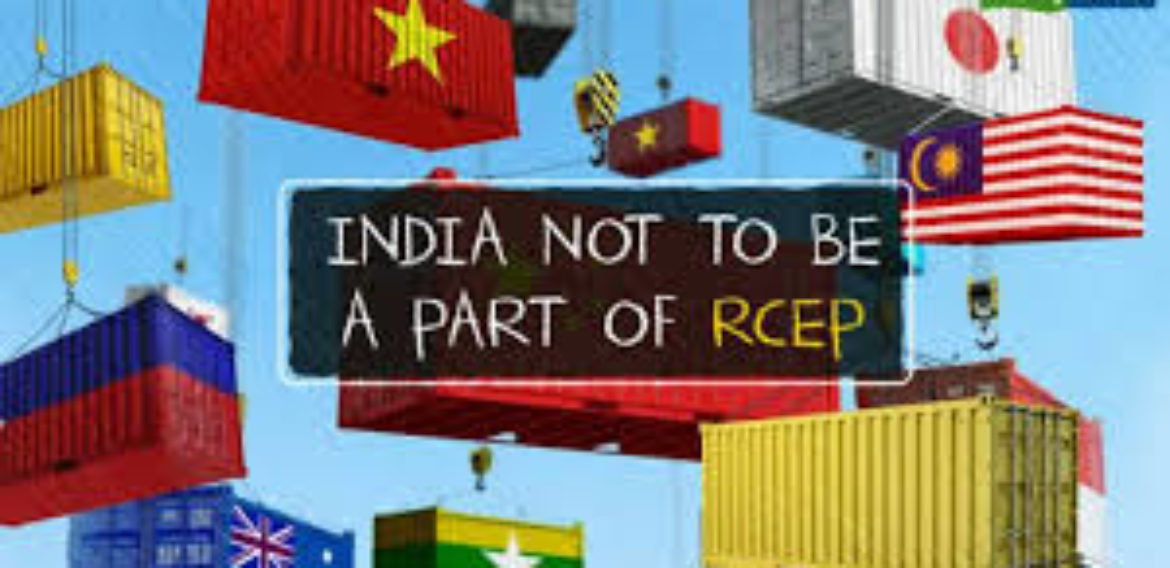ASEAN presses on with the RCEP without India: How they covered it
ASEAN Today - 14 March 2020
ASEAN presses on with the RCEP without India: How they covered it
Despite India’s decision to withdraw from the final stages of negotiations to form the Regional Comprehensive Economic Partnership (RCEP), the remaining parties hope to get the free trade agreement (FTA) signed off by the end of the year.
RCEP will now comprise all 10 ASEAN nations, as well as Australia, China, Japan, New Zealand and South Korea. Here is how the region’s media covered the latest developments surrounding India’s withdrawal.
Why did India choose to opt out?
According to India’s Business Standard, External Affairs Minister S Jaishanker claimed the country’s businesses would be better off outside of RCEP, adding it was time to reassess every trade agreement in a rapidly changing world. “As a nation that is still to integrate itself into global supply chains, develop its infrastructure and scale up its capabilities, these are not easy times,” he said.
Writing in the India Business Law Journal, Sourish Mithun Mitra argued that India no longer feels RCEP is fit for purpose, with multiple concerns about the agreement. He cited the lack of “a level playing field, fair trade practices, transparency and market access during the trade negotiations.”
There are also fears about China’s inclusion. Indian Prime Minister Narendra Modi is adamant that, “the present form of the RCEP agreement does not fully reflect the basic spirit and the agreed guiding principles of RCEP. It also does not address satisfactorily India’s outstanding issues and concerns in such a situation.”
What happens now?
The remaining parties have committed to signing RCEP into action regardless of India’s position. However, they would certainly prefer to include them. The Khmer Times reported earlier this week that ASEAN countries agreed to try to persuade India back to the negotiating table, without detailing what strategies they might use.
Given that it took more than seven years to get the 20 chapters of the mammoth FTA completed (although 13 of those were achieved in 2019 alone), making significant changes while satisfying the other 15 members would be an enormous challenge, especially if the deal is to be signed off as planned by the end of the year.
However, Vietnamese Minister of Industry and Trade Tran Tuan Anh remained optimistic, telling Xinhua, “among RCEP members, India has yet reached an agreement on opening up market with partner countries and it also has some domestic issues that need further discussion.” He added that talks are ongoing.
Nevertheless, the others must now move forward without India; they need to keep further delays to a process that began in 2012 to a minimum. As William Alan Reisch, Jack Coparal and Lydia Murray explained in the Center for Strategic and International Studies, “RCEP negotiations had reached a critical point for the Asian economy as slowing global trade, increasing Asian integration, and disruption of trade patterns all put pressure on RCEP nations to come to an agreement.”
Could India re-join in the future?
Once RCEP comes into being, the door will remain open for India to re-join at any point in the future. It would, in theory, benefit all parties. With the South Asian powerhouse included, RCEP would encompass around 50% of the world’s population and 39% of global gross domestic product. Those figures both drop to 30% with India’s exclusion.
For now, though, they are focusing on fostering bilateral agreements elsewhere in the region. According to Mitra, this may be a mistake. He concludes his commentary with a warning to the Indian government: “It has already endured enough economic losses from limited trading with its immediate neighbours. Does it want to burn its fingers yet again by refusing yet another regional trade forum?”
Currently, there is too much opposition in India—from politicians on all sides to businesses and farmers—for them to sign up. In the future, they may decide to negotiate for inclusion, provided they get a deal that addresses their concerns. That would not be an easy or quick process.
In the meantime, expect the remaining parties to press on and push for RCEP to become a reality by the end of the year. After all, it has become a “crucial target” for ASEAN leaders and one they can ill-afford to miss as regional and global economies suffer blow after blow.






